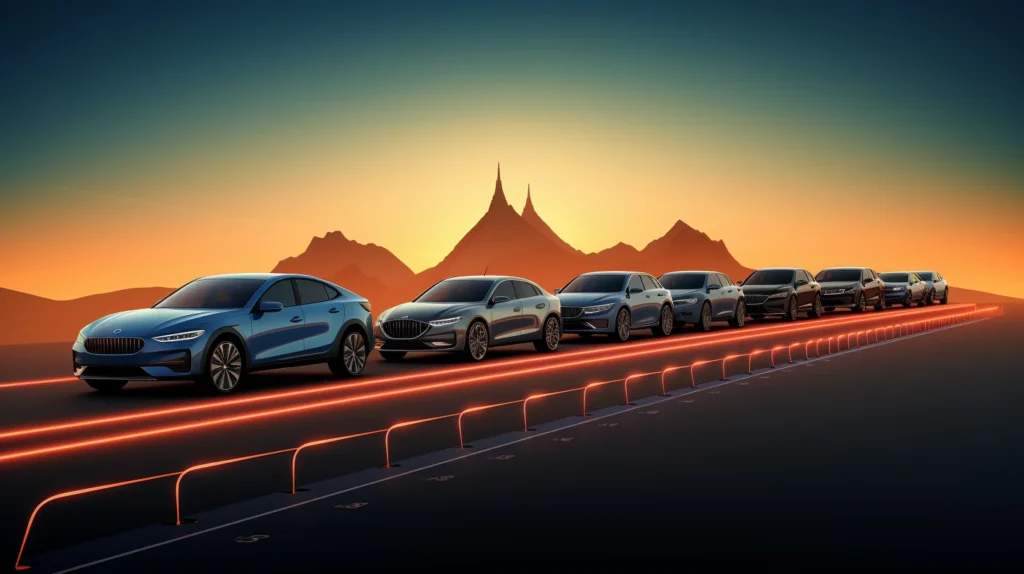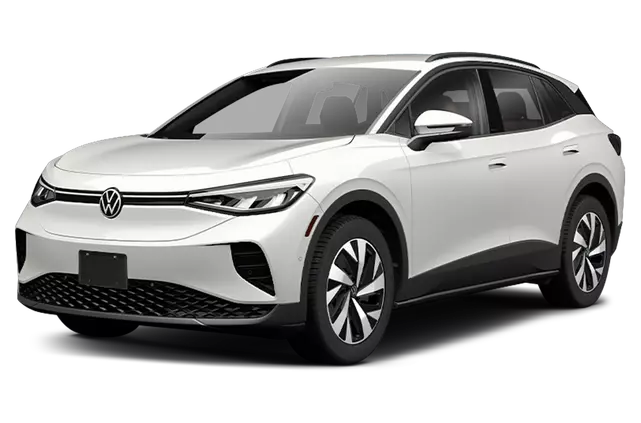Electric Vehicles Surpass 300-Mile Range Milestone in 2024
The electric vehicle (EV) market has reached a new zenith in 2024, with the top 26 EV models now boasting ranges exceeding 300 miles on a single charge. This impressive threshold meets the weekly driving needs of the average American and marks a significant advancement in reducing range anxiety, especially for long road trips.
EV Battery Advancements making 300+ Mile Range Possible
The leap to 300+ mile ranges in electric vehicles (EVs) is primarily attributed to significant advancements in battery technology. These include the development of higher energy density lithium-ion batteries using advanced cathode materials like nickel-manganese-cobalt (NMC) and nickel-cobalt-aluminum (NCA). Innovations in battery management systems (BMS) have optimized performance and lifespan. Emerging solid-state batteries promise even higher energy densities and safety. Silicon-based anodes, offering higher capacity than traditional graphite anodes, and more sustainable and cost-effective manufacturing processes, including reduced cobalt usage, are also key contributors to this progress.
Key EV Battery advancements include:
- Higher energy density lithium-ion batteries with advanced cathode materials (NMC, NCA).
- Sophisticated battery management systems for optimized performance.
- Development of solid-state batteries for increased energy density and safety.
- Silicon-based anodes for higher capacity.
- More sustainable and cost-efficient battery production methods.
2024’s EV Revolution: Charting the Pioneers of 300-Mile Range Mastery
With battery technology advancing at an unprecedented pace, the once-elusive goal of surpassing 300 miles on a single charge has become a reality for an increasing number of models. This progress not only reflects the culmination of years of research and development in battery chemistry and engineering but also signals a new era in the automotive industry. Consumers now have access to a diverse array of electric vehicles that blend range, performance, and sustainability, all while pushing the boundaries of what was once thought possible. As we delve into the specifics, let’s explore the electric vehicles leading this charge, each representing a unique blend of innovation, design, and environmental consciousness, setting new standards for the future of transportation.
1. Lucid Air Grand Touring Leads with 516 Miles
Dominating the list is the Lucid Air Grand Touring, offering an unparalleled 516 miles of range. This model blends luxury with performance, ranging in price from $77,400 to $250,000 for various configurations. The Grand Touring version, priced at $125,600, not only promises a substantial range but also impresses with its luxurious interior and swift charging capabilities.
2. Chevrolet Silverado EV WT: A Powerhouse Pickup
The Chevrolet Silverado EV WT stands out with a 450-mile range and a robust 10,000-pound towing capacity. Priced over $70,000, this electric truck is a strong contender in the EV market, though production has been paused until 2025.
3. Tesla Model S: A Consistent Contender
Tesla’s Model S remains a prominent player in the EV space, offering 405 miles of range. Known for its performance and brand prestige, the Model S continues to be a top choice for EV enthusiasts.
4. Rivian R1S and R1T: Dual-Motor Max Pack Models
Rivian’s R1S and R1T models, both equipped with the Dual-Motor Max Pack, share the fourth spot, each delivering a 400-mile range. The R1S, an electric SUV, and the R1T, an electric pickup, showcase Rivian’s commitment to combining range with utility and style.
5. GMC Hummer EV Pickup 3X: An Off-Road Marvel
The GMC Hummer EV Pickup 3X offers a range of 381 miles. Priced at $107,440, this “supertruck” is as capable off-road as it is on-road, equipped with unique features like Crab Walk and a removable glass roof.
6. Hyundai Ioniq 6 SE RWD: The Range Bargain
Hyundai’s Ioniq 6 SE RWD stands out as a range bargain with 361 miles at a starting price of just $43,565. This model balances affordability with range, making it a strong contender in the EV market.
7. Fisker Ocean Extreme: A New Entrant with 360 Miles
The Fisker Ocean Extreme, offering 360 miles of range, marks the entrance of the rebooted Fisker brand into the EV market. The Extreme trim level combines performance with innovative features like a solar roof.
8. Mercedes-Benz EQS 450+: Luxury Meets Range
The Mercedes-Benz EQS 450+ offers 352 miles of range, blending the luxury of the S-Class with revolutionary EV technology. This model is a testament to Mercedes-Benz’s expertise in creating luxurious, high-range EVs.
9. Tesla Model 3 Long Range: Popular and Practical
The Tesla Model 3 Long Range offers 341 miles, maintaining its popularity due to its affordability, performance, and Tesla’s brand appeal. Priced under $50,000, it’s an attractive option for many EV buyers.
10. Tesla Model X: A Unique Blend of Range and Performance
The Tesla Model X, with a range of 335 miles, combines luxury with the practicality of an SUV. Although it’s pricier than other Tesla models, the Model X stands out for its range and distinctive design.
Additional Notable Models
- BMW iX xDrive50 and Chevrolet Blazer EV RWD: Both offer 324 miles of range, showcasing advancements in both luxury and mainstream EV segments.
- BMW i7 eDrive50: This luxury sedan achieves 321 miles, noted for its high-end interior and smooth driving experience.
- Ford F-150 Lightning Extended Range and Polestar 2 Single Motor: Both offer 320 miles, highlighting the diversity in the EV truck and sedan markets.
- Cadillac Lyriq RWD and GMC Hummer EV SUV 3x: Each provides 314 miles, combining luxury with innovative electric technology.
- Ford Mustang Mach-E California Route 1 Extended Range: Offers 312 miles, known for its performance and versatility.
This comprehensive overview of the top EVs of 2024 underscores the significant strides made in electric vehicle technology, particularly in extending driving ranges. As the EV market continues to evolve, these models set new benchmarks in range, performance, and luxury, paving the way for a more sustainable and efficient future in personal transportation.


